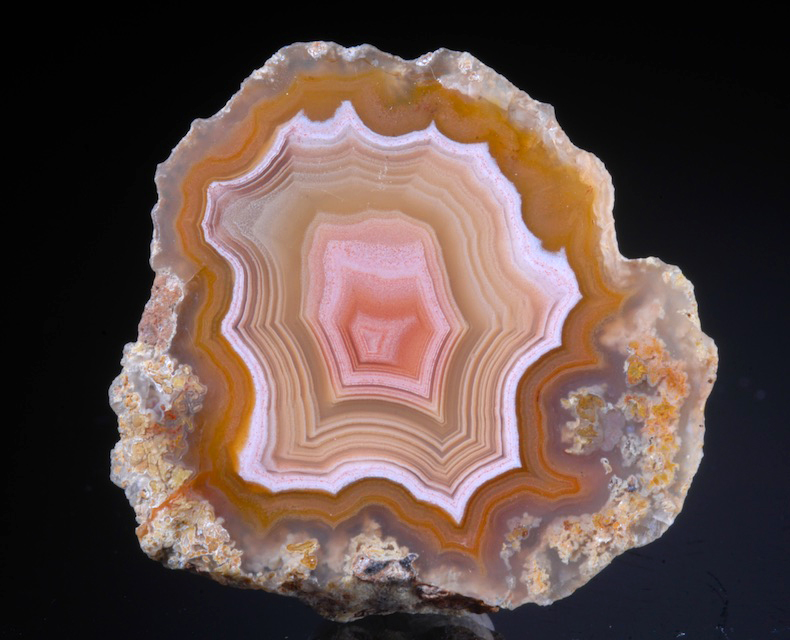Agate
Agate is a type of chalcedony, which is a type of quartz. So what type of quartz is chalcedony? It’s “cryptocrystalline” quartz. When you look at a cryptocrystalline mineral like agate, you just see a smooth surface, not sharp-edged crystals. What makes agate different from other types of chalcedony is that it can show bands and other shapes of different colors or shades of color, and sometimes some of them are translucent, meaning they let light pass through them. The different colors are caused by tiny amounts of different minerals that are included, such as iron and manganese. Most agates form in a volcanic rock called basalt, which usually contains bubbles from air or from water that was heated till it turned into steam, leaving an empty space. The hot water that rises up in volcanic areas often has a lot of silicon dissolved in it, and agates start to form when that water finds its way into the empty bubbles, where the silicon will crystallize into quartz. Agates have been known for thousands of years and were named by an ancient Greek naturalist named Theophrastus after a river in Sicily where he was lucky enough to find some of them. Some well-known agates that are popular these days include Lake Superior, found in states around that Great Lake; Fairburn, in South Dakota; and Crazy Lace, in Mexico.
| Formula | Group or Type | Shape | Hardness | Specific Gravity | Streak | Luster |
|---|---|---|---|---|---|---|
| SiO2 | Quartz: Chalcedony | — | 7 | 2.6–2.7 | White | Vitreous to waxy |
